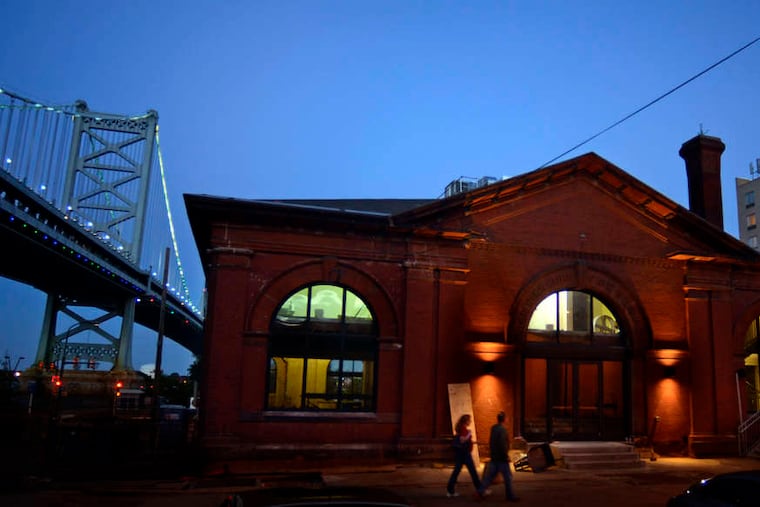William Penn Foundation, Philly’s biggest foundation focused solely on the city, is changing what it funds
Leadership of the foundation is undergoing a generational shift.

Change is coming to Philadelphia’s largest foundation devoted solely to giving in the region.
The William Penn Foundation is instituting a broad set of changes — from the kinds of projects and organizations it is interested in funding, to how groups may apply for money.
Some of these shifts are being influenced by a generational turnover playing out gradually on the foundation’s board. Founded by the Haas family with fortunes amassed through ownership of chemical manufacturer Rohm & Haas Company, the foundation is phasing in leadership of the family’s fourth generation.
Preparation for an eventual generational handoff has been underway for a decade and roughly coincides with a new 10-year strategic plan. While the new giving priorities and interests were championed by the fourth generation, they were developed in partnership with the one before it, says Katherine H. Christiano, William Penn’s board chair.
“Climate change feels like it is being raised up by millennials and Gen Z, and you’ll see that in our new plan, but it was supported very much by the third generation,” says Christiano, 38, a great-granddaughter of foundation founders Phoebe and Otto Haas.
“It’s with their support [that the foundation is] really prioritizing opportunities for communities that have experienced a lot of racial inequity and a lot of other forms of injustice.”
What is the William Penn Foundation?
William Penn Foundation has long been a powerhouse philanthropy in the region. It approved just over $154 million in grants in 2023, a spokesperson said. In recent years, after the Annenberg Foundation moved its headquarters from Radnor to Los Angeles and as the Pew Charitable Trusts shifted focus beyond Philadelphia, the William Penn has assumed primacy among local foundations.
William Penn, founded in 1945, provides an ongoing stream of support for many local charities across several areas — arts and culture, the environment, education, literacy, the creation of public spaces, and community-building.
The foundation also has made some spectacular one-time gifts — like a $25 million donation to the Free Library of Philadelphia announced in 2014, or a 2016 pledge of up to $100 million to revitalize parks, libraries, recreation centers, and playgrounds across Philadelphia.
The new set of priorities and strategic plan don’t represent a dramatic shift, leaders say, and in one important way they are an affirmation of constancy amid a dramatically shifting funding climate.
“I feel like hopefully it’s a reassurance that we’re not going anywhere,” says Christiano.
How is the William Penn Foundation changing?
Previously, the foundation channeled giving through three main program programs: arts and culture, education, and watershed protection. Now it will have five.
Giving to arts and culture programs will continue. The program will still provide operating support to groups, but will open up the program to funding capital projects, such as new buildings.
Under the heading of children and families, giving has been largely focused on literacy. Now the program will give more broadly toward groups that provide family support systems for mental health, homelessness, high-quality early childhood education, and connecting families to public benefits and tax credits, among other areas.
William Penn’s environmental work will expand beyond its current concern relating to clean water. Funding will now go toward groups working to reduce illegal dumping, increasing green space and tree plantings, land conservation, building green stormwater infrastructure, and the intersection of green spaces with social interaction. In the past, William Penn’s work with the watershed has “gone up to New York, northern Pennsylvania, northern New Jersey — this huge tri-state area,” said Christiano, “and we are bringing the environmental work closer to home, closer to the greater Philadelphia region.”
In its new democracy and civic initiatives program, the foundation will address Pennsylvania’s democratic process to “build trust and participation, particularly among underrepresented communities,” according to a program description.
Another distinct granting program new to the foundation will support programs aimed at reducing barriers to workforce training and employment retention.
How will the new funding be allocated? Who gets the money?
In terms of how funds will be allocated among the five giving areas, Christiano said democracy/civic initiatives and workforce training programs “will have less of an allocation since they’re a newer and more exploratory area for us.”
Each program is described in greater detail in materials posted on the foundation’s website this week.
Officials say they hope that in addition to working with its traditional fundees, groups that might have thought themselves unqualified or too small will raise their hands for possible funding. Most groups will be able to respond to a quarterly request for proposals the foundation will put out for particular giving areas — such as improving public spaces in Philadelphia — with an application that officials say is streamlined from its previous version.
“We very much wanted to simplify that application process and have it not be such a heavy lift, especially for the smaller organizations who are doing this amazing work, but don’t have a full time person to be writing these really long grant applications all the time.”
Also new: William Penn will make clear that it is looking for grant proposals that help meet specific objectives — reducing the gap between Black and white voter turnout in the 2032 presidential election, for instance, or putting 10,000 workers with high barriers to employment through workforce training and having 85% still employed 18 months after training.
As for the future of grand gestures like the $25 million to the Free Library, the foundation always has an ear to the ground. The only qualification is that a project or initiative be good for the city in some way, Christiano says.
“I mean, it’s as simple as that.”